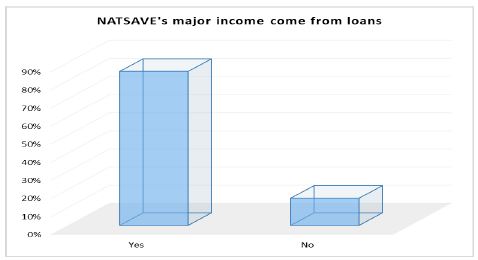Effects of External Factors on Cash Flow Performance of the National Savings and Credit Bank Zambia (NATSAVE)
DOI:
https://doi.org/10.5281/zenodo.14201968Keywords:
cash flow performance, external factors, zambiaAbstract
This was a research on the effects of external factors on cash flow performance of the National Savings and Credit Bank (NATSAVE). The study adopted a case study design. The study used a sample size of 285 respondents. The research objectives were to find out the external factors affecting cash flow performance of NATSAVE; to determine the extent of cash flow pattern at NATSAVE; to examine the effects of external factors on the cash flow performance of NATSAVE and to explore how NATSAVE manage the external factors to increase cash flow performance. The study established that the external factors (economic, technological, sociocultural and legal factors) affect cash flow at the National Savings and Credit Bank. When respondents were asked to rank known factors affecting the cash flow performance of NATSAVE, the majority agreed the NATSAVE has been hit mostly by economic factors, followed by political factors, then technological factors, legal and finally sociocultural factors. The coefficient results indicated that the predictors (economic, technological, sociocultural, political and legal factors) had a statistically significant relationship with cash flow performance at NATSAVE.
According to the study findings, among others, some of the effects of the external factors are that economically conditions such as inflation, interest rates, exchange rates, and overall market demand can significantly impact cash flow positively or negatively. Social cultural changes in consumer behavior, trends, and preferences can influence cash flow. Positive political environment improves cash flow. To deal with the external factors affecting organization cash flow, the study results revealed that the majority of the respondents agreed that closely monitoring monetary expenses, providing cash flow training for your team, communicating effectively within the business and value addition could play a major role in improving the cash flow of the organization. Notably, a lot of people disagreed on the use of offloading inventory that doesn’t sell well as a measure to boost cash flow. Some recommendations arising from the study are that there is need for the Zambian government to put up policies that can help reduce inflation, and reduce on the interest rates then the organizations such as banks can improve cash flow and that there is a need to learn the culture and all aspects of social elements around the place in order to formulate strategies to help improve cash flow of an organization.
Downloads
References
Belobo, A. B., & Pelser, F. (2014). Cash flow management: Assessing its impact on the operational performance of small and medium size enterprises at the Mafikeng local municipality in South Africa prior to the global financial crisis. Mediterranean Journal of Social Sciences, 5(27), 226-234.
Canare, T. (2018). The effect of ease of doing business on firm creation. Annals of Economics and Finance, 19(2), 555-584.
Haabazoka, L., Nyikosa, K. K., & Mwanaumo, E. (2021). A study of internal factors affecting commercial banks’ provision of bank services in the new digital economy for developing countries: A case study ZANACO bank of Zambia. in Modern Global Economic System: Evolutional Development vs. Revolutionary Leap, 11, pp. 1091-1115. Springer International Publishing.
Lamberg, J. A., Lubinaitė, S., Ojala, J., & Tikkanen, H. (2019). The curse of agility: The Nokia Corporation and the loss of market dominance in mobile phones, 2003–2013. Business History.
Mark, J., & Nwaiwu, J. N. (2015). Impact of political environment on business performance of multinational companies in Nigeria. African Research Review, 9(3), 1-10.
Musembi, D. M., & Sporta, F. (2023). Effect of investments on cash flow of manufacturing firms listed at the nairobi securities exchange. International Journal of Finance Research, 4(1), 25-46.
Njoroge, J. K., Ongeti, W. J., Kinuu, D., & Kasomi, F. M. (2016). Does external environment influence organizational performance? The case of Kenyan State Corporations. Management and Organizational Studies, 41-51.
Nwanyanwu, L.A. (2013). Hire purchase strategy of physical capital Investment and financial performance of construction companies: Illustrating from the Nigerian Stock Exchange. Mediterranean Journal of Social Sciences, 4(4), 449-460.
Ross, J. R., Fazzari, S. M., & Petersen, B. C. (2007). Financing innovation and growth: Cash flow and external equity. The Journal of Finance, 64(1), 151-185.
Salihu, A. (2015). Effect of environmental factors on small scale businesses performance in Kano and Sokoto States. Unpublished Master’s Degree Thesis, Ahmadu Bello University, and Zaria.
Shapira, P., & Youtie, J. (2010). The innovation system and innovation policy in the United
States. Competing for Global Innovation Leadership: Innovation Systems and Policies in the
USA, Europe and Asia, pp.5-29. Stuttgart: Fraunhofer Verlag.
Soet, M. A., Muturi, W., & Oluoch, O. (2018). Effect of financing cash flow management on financial performance of mutual funds in Kenya. European Journal of Business, Economics and Accountancy, 6(6), 7-16.
Trenca, I., Petria, N., & Corovei, E. A. (2015). Impact of macroeconomic variables upon the banking system liquidity. Procedia Economics and Finance, 32, 1170-1177.
Voiculet, A., Belu, N., Parpandel, D. E., & Rizea, I. C. (2010). The impact of external environment on organizational development strategy. Management Journal of Business Studies, 4(5), 123-152
Yamoah, G. (2016). Cash management practices: A study on residential facilities for Kwame Nkrumah university of science and technology students. Doctoral dissertation.

Published
How to Cite
Issue
Section
ARK
License
Copyright (c) 2024 Julius Mutati, Eustone Kapotwe

This work is licensed under a Creative Commons Attribution 4.0 International License.
Research Articles in 'Social Science Journal for Advanced Research' are Open Access articles published under the Creative Commons CC BY License Creative Commons Attribution 4.0 International License http://creativecommons.org/licenses/by/4.0/. This license allows you to share – copy and redistribute the material in any medium or format. Adapt – remix, transform, and build upon the material for any purpose, even commercially.










